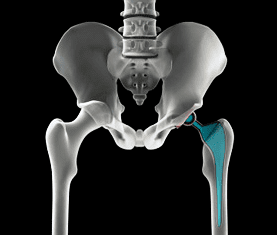Some Reassurance for Metal-on-Metal Hip Implant Patients?
This is the typical refrain from so many of our clients who were implanted with defective metal-on-metal hip implants made by orthopedic giants like DePuy, Stryker, Wright Medical, and Zimmer. The irony is that those who utter those words are actually very close to the emerging stereotype for these clients.
 Many of the patients who were implanted with metal-on-metal hip implants were young – ages 30 to 59. They were active and athletic. And they were struggling with the reality that they were going to require a painful, difficult hip implant surgery and rehabilitation, something that they probably associated with aging grandmothers in nursing homes prior to their personal diagnosis with avascular necrosis or another medical condition that destroyed their hip joint necessitating the joint replacement procedure.
Many of the patients who were implanted with metal-on-metal hip implants were young – ages 30 to 59. They were active and athletic. And they were struggling with the reality that they were going to require a painful, difficult hip implant surgery and rehabilitation, something that they probably associated with aging grandmothers in nursing homes prior to their personal diagnosis with avascular necrosis or another medical condition that destroyed their hip joint necessitating the joint replacement procedure.
It is no wonder then that these patients were so thrilled to learn about metal-on-metal hip implants, which promised to restore their former mobility and lifestyle and to do so without the tremendous burden of undergoing revision surgeries every 10 years. Now, these patients are finding that those promises were not only empty, but that the devices have created a host of new issues: defective product recalls, tissue damage, pseudotumors, inflammatory reactions, revision surgeries after only two to three years, post-operative wound infections, undergoing painful rehabilitation yet again, metallosis, metallic debris floating in their joint spaces, and concerns about the long-term impact of having elevated levels of cobalt and chromium in their bloodstream.
A recent study has provided some reassurance to patients who have endured a steady stream of bad news and unanswered questions for more than two years since early reports of a catastrophic failure of metal-on-metal hip implants to perform as intended (and represented by their manufacturers). Last week, a study was published in the British Medical Journal which analyzed cancer rates among patients with metal-on-metal implants versus patients with other types of implants as well as the general population. This study included 40,576 patients with MoM implants. The authors of the study from the Universities of Exeter and Bristol noted that male patients with metal hip implants had a 6.2% chance of being diagnosed with cancer within seven years of their hip arthroplasty surgeries; women who had undergone implant surgery with a metal-on-metal hip implant faced a 4% risk of developing cancer in the seven-year post-operative period. These cancer rates for MoM patients were lower than the cancer rates noted in the general population as well as in patients who had other implantable devices. This study was funded by the National Joint Registry of England and Wales.
So, should metal-on-metal implant patients be reassured?
Maybe, but the study only covers the seven-year time period following implantation, which may be too short of a time period to truly evaluate a patient’s overall cancer risk (a longer study is already underway). So far, it appears that most patients do not manifest signs and symptoms of metallosis until at least two to four years following their implantation surgery, so if there is a cancer risk associated with the elevated cobalt and chromium levels in their joints and bloodstream, it is unlikely that that would be detected within the initial seven-year time period.
Other studies in the past have raised concerns that the breakdown of metal-on-metal hip implants might lead to cancers, especially since metallic particles have been found in bone marrow, blood, livers, kidneys, and bladders of metallic hip implant patients. As a patient, I would find it far more troubling that these implants have been placed into hundreds of thousands of patients without knowing some of the most basic answers to important health and safety questions:
- Could this device lead to cancer?
- How long does this implant last?
- What is the failure rate of metal-on-metal implants?
- If the cobalt and chromium leach into my body, what can be done to get it back out?
- What are the long-term health effects of metallosis?
Unfortunately, given the billions of dollars that are generated in the orthopedic device industry and the fact that the entire class of devices is under attack (both in the court system as well as by medical device regulators), we may never get honest answers to these questions.
Share This


